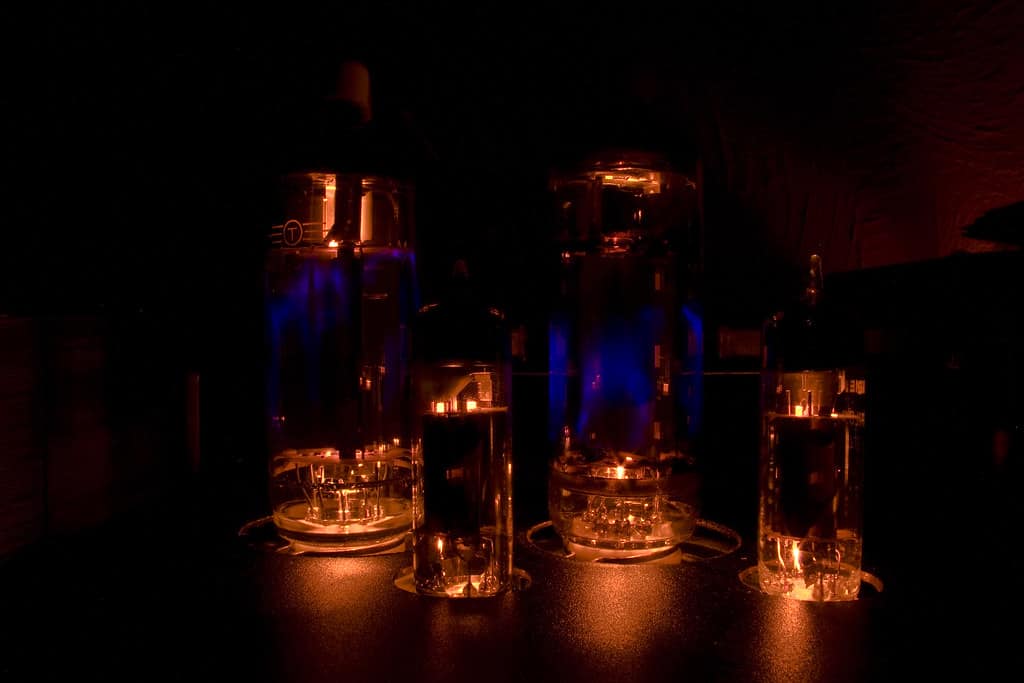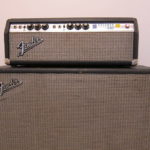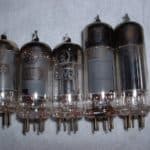Tube amps are amazing and I would never think less of them.
However, valves are ancient technology and their warm tones come at a price.
You see, the harder you push them, the shorter they will live, and that’s a shame.
But how long do amp tubes last actually?
Well, after some informal research I found out the following:
Amp tubes have a limited lifespan. Power tubes will last for 500 to 800 hours considering an average player’s use case. Preamp tubes will last longer such as rectifier tubes. Touring players usually replace amp valves every 6 months. These are just estimations and should be taken with a grain of salt.
In this article, I will try to answer all the most important questions you might have about how long do amp tubes last.
After this short read, you will have a clear idea about what usable life to expect from your tubes and know if it’s the time for replacing them.
As a foreword, I have to say that all the life hours I will mention in this article have to be taken with a grain of salt since different players, different use cases, different models and even different particular units will result in completely unlike scenarios.
You might run for years with the stock valves of your amp or have them breakdown (although, unlikely) a few weeks from buying it.
Having this said, are you ready to get started?
Let’s go!
How often do amp tubes need to be replaced?
Amp tubes have a limited lifespan and will need to be replaced every 500 to 800 play hours. This estimation is for power tubes, preamp and rectifier tubes will last longer. Your mileage may vary, however. Higher volumes will push your tubes harder. Gigging musicians change tubes every 6 months on average.
How do I know if my amp tubes are bad?
If some of your tubes has gone bad you will surely notice it, don’t worry, however here are some clear signs of an amp valve that needs replacing:
For preamp tubes:
- Hissing sounds
- Pop and crackling sounds
- Feedback like noise
- No sound in certain channels or amp modes
For power tubes:
- Muddy low-end response
- Lower volume output
- Pop and crackling sounds
- Buzzing
- Volume swells
For rectifier tubes:
- No sound output in a channel where a rectifier tube is used
How much do a new set of amp tubes cost?
If you have to replace the tubes on your amp you might be better off by getting a new complete set. This will give you at least 6 months of worry-less playing. A set of valves for a high-watt amp will usually cost you around $200 to $300 dollars. However, if you shop for vintage components costs will go up.
Can I replace the tubes of my amp?
You can, and there are many youtube videos that teach you how to do it. If you feel confident enough, give it a try.
However, be extra careful when dealing with the internals of a tube amp. If you didn’t know, the electronics inside a tube amp can hurt you.
Are all amp tubes the same?
All amp tubes are not the same, they are different kinds such as power, preamp, and rectifier tubes, different manufacturers, different models that are replaceable with each other, and a lot of other details. Also, there are NOS tubes that are vintage, unused tubes considered of higher quality.
How can I make my amp tubes last longer?
There is really not much you can do for your tubes to last longer. Their design has its short lifespan integrated and is part of what makes them sound so magical. Playing at lower volumes would stress them less, and give them some extra hours of life, but at what cost? You need to hear yourself.
Many articles online will tell you that warming up and letting your tubes cool down properly will make them last longer. I’m not that sure about that, but just being kind to them is not a bad thing.
Take the usual care as with any other electronic appliance and if their time comes, there’s not much you can do about it.
I recommend, also that you take your amp to a certified technician at least once for a checkup and ask them about the condition of your valves and if there is something you could do to take better care of them.
What kind of maintenance do amp tubes need?
Amp tubes don’t really need any special kind of maintenance or care. Just don’t hit them with a baseball bat. Sadly, this central part of every great amp is practically disposable. Once their usable life is met, they will fail and you will have to replace them with fresh ones. There’s not much to do about it.
The average lifespan of different kinds of amp tubes
Different kinds of tubes have different lifespans. Of course, this depends on the player use (and abuse), the brand, the manufacturer, the quality of materials, and many other technical details that will make any certain prediction impossible.
For this article, I put together a table of the most common guitar amp tubes, their most common usage, and their expected lifespan for the average player:
| Model | Usage | Lifespan (New) | Lifespan (NOS) |
| 6L6 | Power tube | 500 to 800 hours | 2500 hours |
| 6V6 | Power tube | 500 to 800 hours | 2500 hours |
| EL34 | Power tube | 500 to 800 hours | 2500 hours |
| EL84 | Power tube | 500 to 800 hours | 2500 hours |
| KT66 | Power tube | 500 to 800 hours | 2500 hours |
| KT88 / KT90 / 6550 | Power tube | 500 to 800 hours | 2500 hours |
| 12AX7 | Preamp tube | 2500 hours | 5000 hours |
| 12AU7 | Preamp tube | 2500 hours | 5000 hours |
| 6922 | Preamp tube | 2500 hours | 5000 hours |
| 5AR4 | Rectifier tube | 5000 hours | 10000 hours |
| 5Y3 | Rectifier tube | 5000 hours | 10000 hours |
| 5U4GB | Rectifier tube | 5000 hours | 10000 hours |
| 5U4G | Rectifier tube | 5000 hours | 10000 hours |
Remember that NOS stands for New Old Stock and it refers to tubes that were produced decades ago but are still unused and kept in stock.
Finally, know that there are just vague estimations based on information gathered online and your mileage will vary greatly.

Hello there, my name is Ramiro and I’ve been playing guitar for almost 20 years. I’m obsessed with everything gear-related and I thought it might be worth sharing it. From guitars, pedals, amps, and synths to studio gear and production tips, I hope you find what I post here useful, and I’ll try my best to keep it entertaining also.





